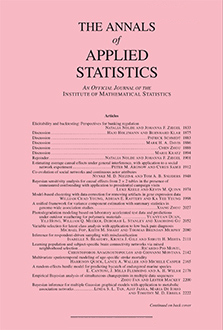Abstract
For assessing in real time the short-term trend of major economic indicators, official statistical agencies generally rely on asymmetric filters that were developed by Musgrave in 1964. However, the use of the latter introduces revisions as new observations are added to the series and, from a policy-making viewpoint, they are too slow in detecting true turning points. In this paper, we use a reproducing kernel methodology to derive asymmetric filters that converge quickly and monotonically to the corresponding symmetric one. We show theoretically that proposed criteria for time-varying bandwidth selection produce real-time trend-cycle filters to be preferred to the Musgrave filters from the viewpoint of revisions and time delay to detect true turning points. We use a set of leading, coincident and lagging indicators of the US economy to illustrate the potential gains statistical agencies could have by also using our methods in their practice.
Citation
Estela Bee Dagum. Silvia Bianconcini. "A new set of asymmetric filters for tracking the short-term trend in real-time." Ann. Appl. Stat. 9 (3) 1433 - 1458, September 2015. https://doi.org/10.1214/15-AOAS856
Information





